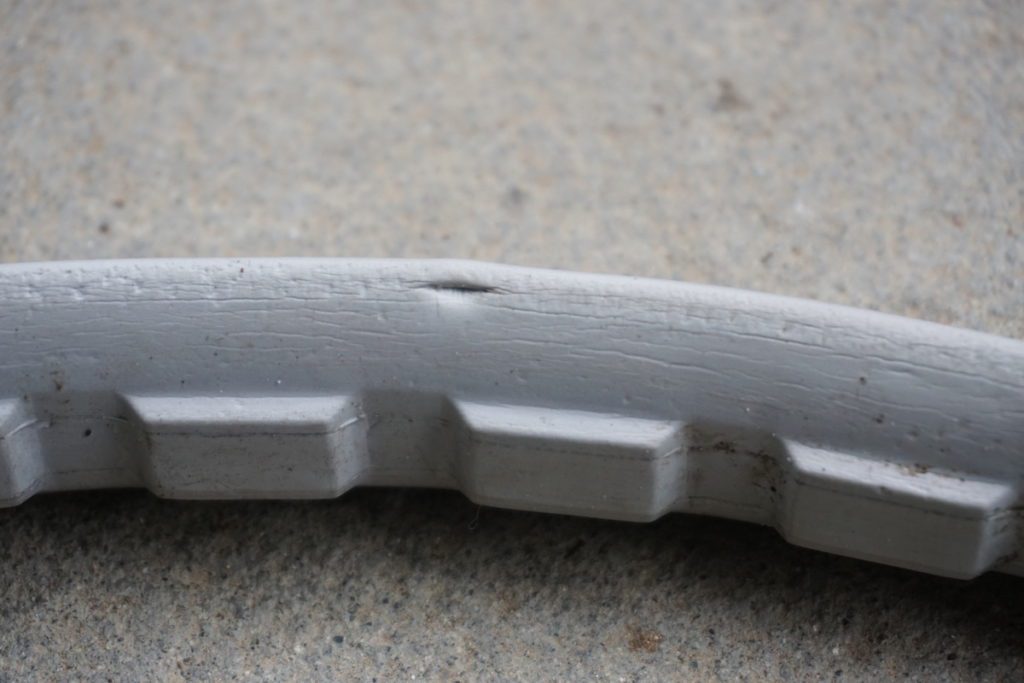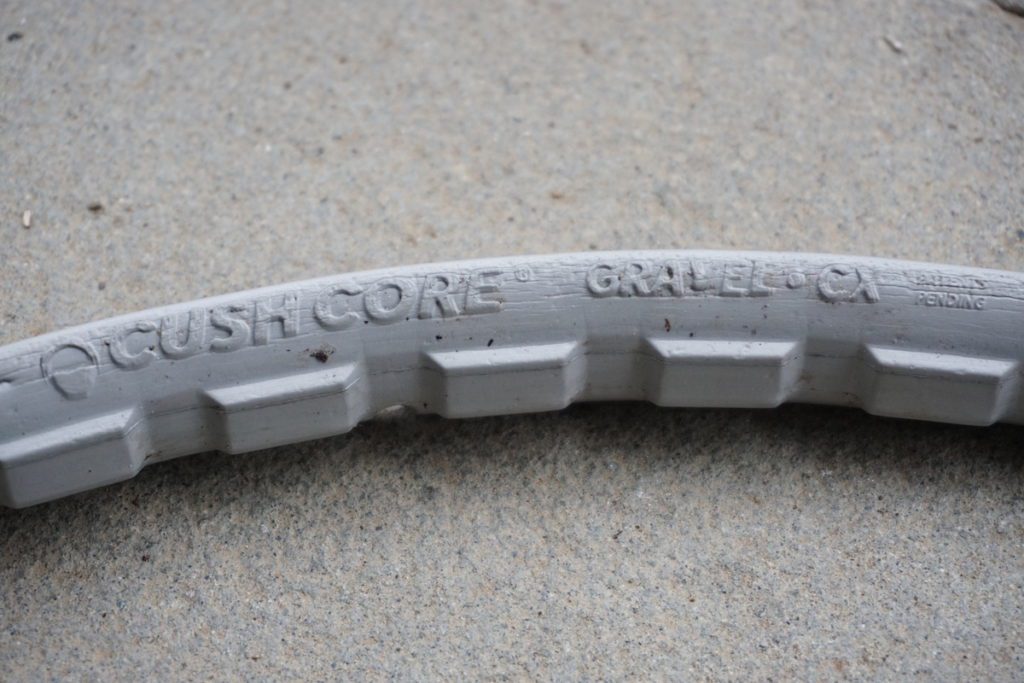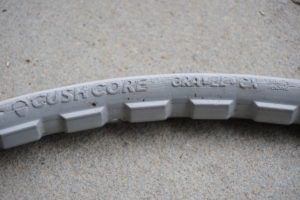Are tire inserts the future for gravel riding?
Weighing the benefits and drawbacks for cyclocross and off-road riding

Tire inserts are steadily gaining followers in mountain biking and, as they become more common, brands are starting to offer inserts specifically for gravel and cyclocross. What are tire inserts and why would anyone need them for skinny tires? What can they do that more tire volume can’t? Well, there are a few advantages.

What are tire inserts?
Lets start with the first question. What are tire inserts? There are several very different designs out there, but they all share the same basic idea. Something solid-ish that goes inside a tire, usually tubeless tires, instead of just air. Inserts can help protect the rim and protect the tire casing itself.
Where does the idea come from? Mountain bikers borrowed and adapted the idea from off-road motorcycles. In moto, a solid rubber-foam insert – called a “mousse” or “bib-mousse” fills the entire inside of the tire instead of air.
For bicycles, there are a few factors that make airless options impractical. First, riders have to power their own movement making the weight of a solid insert is an obvious disadvantage. Bikes also use a wide range of tire pressures, which need to change according to conditions. Instead of a solid insert, most bicycle options use some sort of partial insert in combination with air and, usually, tubeless tire sealant. Inserts vary widely in design, which is where things get interesting. Each design has its own set of advantages and disadvantages.
The idea first gained a foothold in mountain biking where tubeless tires are prevalent and weight is less of a concern. New designs are getting lighter, and tubeless is gaining popularity in gravel, making the cross over into 700c wheels inevitable. Early adopters include Canadian veteran racer and self-professed gearhead, Geoff Kabush, who has used them successfully at several gravel events.

What is the advantage for gravel?
The most obvious – but not only – benefit of running an insert is to protect against flat tires. Gravel riding still uses relatively low-volume tires and an errant root or unseen loose rock can quickly deflate a fun ride.
How do inserts protect against flats? By providing a buffer of soft material between the tire, or the ground, and the rim. Hit something too hard and the tire will compress into the foam instead of directly contacting the rim. This protects the rim from damage. It also protects the tire from pinch flats and, to a lesser extent, from punctures from sharper rocks. Glass, nails, and any other object that slices instead of pokes into the tire are still a problem, of course. As are sidewall slices from sharp rocks. So the advantage of inserts depends to an extent on where you regularly ride.
The second advantage is an offshoot of the first. Since you don’t have to worry as much about flatting, you can safely run lower tire pressures. That gives you better grip and rolling resistance on often loose and rough surfaces. It also means less surface chatter comes up through the bars, which increases comfort and reduces fatigue.
Depending on the design, tire inserts can also provide more sidewall support at lower pressures. Some inserts, like CushCore, physically push against the side of the tire. This provides support for the sidewalls so you can still corner hard at low pressures while still letting the tire tread to better conform to, and grip the surface.
Most designs also help to some extent in keeping tubeless tires seated, since they physically push the tire bead against the rim. Less burping tires, more braaping!

What about cyclocross?
Tire inserts are arguably even more useful for cyclocross. There’s fewer errant stones waiting to dent a rim than on gravel bikes, sure. But the extreme low tire pressures for cyclocross, and near absence of traction in the mud, are ideally suited to the world of cross racing. Especially when the traditional alternative is a tubular tire, which can run well over $150.00 per tire.
Tubulars are popular in cross because you can run such low pressures with a lower risk of flatting. Low tire pressures, again, lets the treads conform to, and grip the ground in slippery conditions. Some pro racers are running tire pressures will below 20 p.s.i., even into the mid-teens range. That’s next to impossible with a tube and tire set up. It is more practical with tubeless tires but, and especially for those of us that are heavier or not as delicate on the bike as a pro rider, tubeless on its own can start to burp or unseat at extremely low pressures. As with gravel, inserts add sidewall support to help keep the tire seated as the pressures get low. Some designs even let you run them with a flat tire, though they usually recommend riding slower or more carefully. It should be enough to get you to the pits if you’re in a race situation, though, and better than riding on the rim.
While the added weight of tire inserts might put off top-pros (who also don’t have to pay to replace the tubulars they flat) for the rest of us its an option that offers performance advantages compared to running tubes at a lower price than tubulars.
What are the weaknesses?
There are some drawbacks to tire inserts, of course. Whether they outweigh the advantages will depend on how you ride and to an extent, where you ride.
The first and most obvious drawback is weight. Adding inserts means adding weight to your rim. Mountain bikers often can offset this by running lighter tire casings, but there’s less of a weight difference between casings in gravel and cyclocross tires than there is for mountain bikes.
There is an added step for installation and removal. The lighter material for narrower tires usually means this process is easier that some mountain bike insert designs, but it can take a bit of technique.
Last, most insert designs don’t do much to protect against sidewall cuts. Like running tubeless, a sizeable sidewall cut can force you to put a tube in. The difference is that you have to take the insert out – and carry it around, depending where you are – before you can put a tube in. This did happen to me at a cross race this fall, where a sidewall cut left me with a flat about 15 minutes before the start. It was a scramble, but I was still able to remove the inserts with a single tire lever, throw in a tube and rush to the start.






